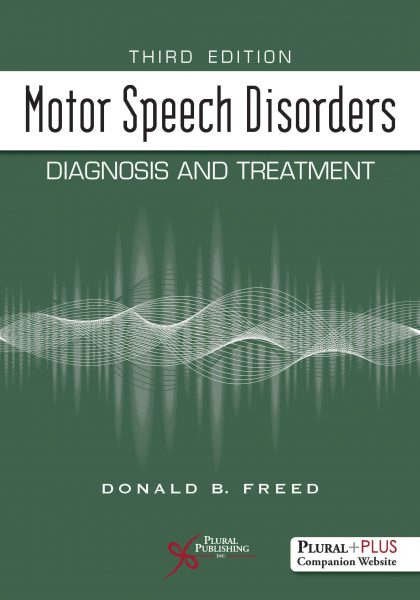About The Book
The revised edition of A Handbook on Stuttering continues its remarkable role as the authoritative, first-line resource for researchers and clinicians who work in the field of fluency and stuttering. Now in its seventh edition, this unique book goes beyond merely updating the text to include coverage of roughly 1,000 articles related to stuttering research and practice that have been published since 2008. This extended coverage integrates the more traditional body of research with evolving views of stuttering as a multi-factorial, dynamic disorder.
Comprehensive, clear, and accurate, this text provides evidence-based, practical information critical to understanding stuttering. By thoroughly examining the intricacies of the disorder, A Handbook on Stuttering, Seventh Edition lays the foundation needed before considering assessment and treatment.
New to the Seventh Edition
- A completely reorganized table of contents, including two new chapters.
- The deletion of approximately 1,000 non-peer-reviewed references from the previous edition to assure discussion of the highest quality evidence on stuttering.
- New content on the development of stuttering across the lifespan and assessment.
- Given the Handbook’s historic role as a primary reference for allied professionals, a new chapter that addresses myths and misconceptions about stuttering
- Expanded coverage on the role of temperament in childhood stuttering
- Expanded coverage of brain-based research, genetics, and treatment findings.
- A thoroughly updated chapter on conditions under which stuttering fluctuates
- Brief tutorial overviews of critical concepts in genetics, neuroimaging, language analysis and other relevant constructs, to better enable reader appreciation of research findings.
- A greater selection of conceptual illustrations of basic concepts and findings than in prior editions
- Integrated cross-referencing to content across chapters
- A PluralPlus companion website showing the deleted content from the previous edition
About The Authors
Oliver Bloodstein, PhD, was emeritus professor of speech and former director of the program in speechlanguage pathology and audiology at Brooklyn College of the City University of New York. His career was spent in research, teaching, and clinical work on stuttering and he wrote extensively on the subject. He was a Fellow of the American Speech-Language-Hearing Association and the recipient of its highest award, the Honors of the Association.
Nan Bernstein Ratner, EdD, CCC-SLP is a Professor of Hearing and Speech Sciences and Cognitive Neuroscience at the University of Maryland at College Park. She conducts research that has been funded by both the US NIDCD and NSF, and publishes frequently in the areas of language acquisition and speech/language disorders. Dr. Bernstein Ratner is a Fellow of the American Association for the Advancement of Science, and is an ASHA Honors recipient.
Shelley B. Brundage, PhD, CCC-SLP, BCS-F, is professor and chair in the Department of Speech, Language, and Hearing Sciences at George Washington University in Washington, DC. Her research focuses on the use of virtual reality in stuttering assessment and treatment as well as using technology to improve clinical learning. Dr. Brundage is a Fellow of the American Speech-Language-Hearing Association. In 2015, she received the Knowledge Development and Innovation Award by the International Fluency Association and in 2017 was recognized with the Alumni of Notable Achievement Award by the University of Minnesota. She is gratified to be a part of the Handbook, particularly given that Nan Ratner was the person who first got her interested in stuttering.
Table oF Contents
Foreword
Preface
About the Authors
Reviewers
Acknowledgements
Section I. Understanding the Nature of Stuttering
Chapter 1. Defining and Describing Stuttering
Chapter 2. The Demography of Stuttering: Across the Life Span, Families, and Communities
Chapter 3. Early Childhood Disfluency and Stuttering Onset
Chapter 4. Developmental, Medical, Familial, and Educational History of PWS, and the Social and Vocational Impacts of Stuttering
Chapter 5. Theories and Models of Stuttering
Section II. The Quest for Underlying Mechanisms
Chapter 6. Central Neurological Findings
Chapter 7. Motor and Sensory Abilities
Chapter 8. Anticipation, Anxiety, and Stuttering
Chapter 9. Personality and Temperament
Chapter 10. Cognitive and Linguistic Abilities
Section III. Assessment and Treatment of Stuttering
Chapter 11. Conditions Under Which Stuttering Fluctuates
Chapter 12. Myths and Mysteries about Stuttering
Chapter 13. Assessment of Stuttering
Chapter 14. Treatment
References
Index
Only logged in customers who have purchased this product may leave a review.






Reviews
There are no reviews yet.